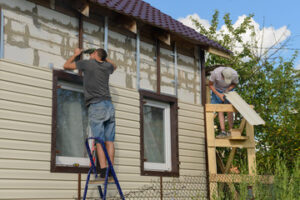Doula Kansas City provides physical, emotional and informational support during pregnancy, childbirth and postpartum. They complement the care you receive from your obstetrician or midwife.

They are a great resource for women who are single or have partners who will not be present at the birth. They can also help with negotiating hospital/birth center rules about who is allowed in the delivery room.
Doulas are non-clinical birth coaches who offer physical and emotional support to pregnant people before, during, and sometimes after childbirth. They don’t have any medical qualifications, but they have undergone specific training in labor and postpartum support.
Studies of the impact of doulas show that they are positively correlated with positive birth outcomes. They help to improve delivery methods, reduce the length of time spent in labor and, in some cases, reduce the need for epidurals and the number of cesareans. They also have been found to increase breastfeeding success. This can be especially helpful in lower socioeconomic communities.
The advocacy that doulas provide is thought to be a major reason for the positive outcomes. Doulas are able to connect their clients to healthcare providers and resources. They are able to inform their clients about the different options available to them in regards to their care, and they also help with communication between the mother and the hospital staff.
Despite the fact that doulas are not trained to provide clinical care, they can play an important role in providing information and assisting with decision making. This may be particularly true in situations where women experience health disparity, such as those who are black or who have lower socioeconomic status. One study comparing 226 socially disadvantaged women who were doula assisted with a control group found that the doula-assisted mothers were four times less likely to have low birth weight babies, two times less likely to have any kind of birth complication, and had a much higher newborn Apgar score.
Doulas have a long history in the United States. Historically, Black birth workers known as Granny Midwives played a similar role to doulas today. However, as modern medicine became more institutionalized in the early 1900s, many obstetricians started to view their work as dangerous and put up several barriers against it.
Doulas are becoming increasingly popular in the US, and the use of them is increasing worldwide. It is recommended that women consider the option of using a doula when planning their pregnancy. The good news is that it’s not only affordable for most people, but it’s also a very safe and effective way of handling labor.
Postpartum
Getting help after you have a baby is important, and a doula can be a good resource. They can help you get the information you need to care for yourself and your new baby, from breastfeeding to figuring out sleep schedules. They can also remind you to go to your doctor’s appointments and to watch for warning signs.
The postpartum period gets less attention than the pregnancy, but it can be just as challenging. Many women feel overwhelmed by a number of physical changes and the responsibility of caring for a newborn. It is common to feel down in the weeks after birth, and a doula can be helpful in managing these feelings.
A doula can also help with the transition to motherhood and with any challenges that arise during this time, such as bonding difficulties or difficulty feeding your baby. Having a doula can be especially helpful for women who are experiencing these issues because of cultural or socioeconomic factors.
When hiring a doula, it’s important to find one with whom you feel comfortable. Interview several until you find the right match. Some doulas have training in more than one area, so they can serve as both labor and postpartum doulas.
In the United States, about six percent of women report having doula support during childbirth. If you’re planning on using a doula, your OB/GYN will usually arrange for the doula to meet with the rest of your medical team a couple of times before the birth. However, if you plan on hiring a doula privately and will only be working with your OB/GYN during the birth, she may not be as familiar with the hospital’s procedures and practices.
In some cases, doulas have an agenda and start advocating for a particular approach to childbirth. For example, they might suggest avoiding pain medications and other interventions they think are unnecessary. This can lead to conflict between the medical team and the doula. It’s important that a doula understands her boundaries and knows when to leave the medical professionals to their job.
The Doula’s Role
A doula’s role is to provide emotional, physical and informational support throughout a pregnancy. While they cannot change the medical recommendations of a midwife or obstetrician, they can offer women a range of other options for pain management during labor and help them to feel supported, regardless of how their birth unfolds.
Doulas can also help their clients to communicate their preferences to their birthing team, and to make sure that their needs are heard. They can also provide a calming presence for their clients, and they can encourage them to move around during labor and try different positions to improve contractions. This can lead to a more comfortable experience for the client, and it may mean that they require less medication and have a faster recovery postpartum.
A doula can also offer reassurance and comfort to partners and other family members. They can give them a space to express their own fears and anxieties about the birth, and they can remind them of the positive outcomes of a particular type of delivery or birth. This can be helpful for those who are not familiar with the various kinds of births, and it can reduce stress for everyone involved.
Doulas also can help to prevent and address issues of medical system racism and discrimination that people of color, particularly black women, experience in clinical settings. This is one way that doulas can contribute to addressing the maternal morbidity and mortality crisis in the states.
Other types of doulas include end-of-life doulas, who provide care to terminally ill adults in geriatric or palliative care, and doulas for families undergoing abortions and miscarriages. They can also provide support and education to people wishing to become pregnant, as well as to those who are already pregnant.
There are many different doula organizations that provide training and certification, but there is no national or statewide accrediting body for doulas. Some states have begun to explore ways to reimburse doulas, but others are still debating the issue.
Finding a Doula
Doulas are a valuable resource for anyone hoping to have a positive birth experience, but they can be especially helpful for women of color who have higher rates of severe maternal morbidity. March of Dimes supports increasing access to doula services as one way to help address these disparities.
A good place to start your search is through word of mouth referrals from other mothers, your health care practitioner or your community. Once you have a list of potential doulas, interview them and choose the one that feels like a good fit for you. Remember, you will be working closely with this person throughout the duration of your pregnancy and birth, so it is important that you have chemistry and feel comfortable.
Another factor to consider is whether or not the doula has completed a formal training program. Most doulas are certified by a reputable organization (like DONA or Childbirth International), but others may have received their training on the job through apprenticeship models and/or self-study. It is a good idea to ask potential doulas what their training entails and what types of births they’ve attended.
In addition to asking about their training, be sure to find out if they offer packages at different price points. Packages are a great way to get a variety of support from a doula, but it is also important to understand that the pricing model can make doula services more or less accessible depending on your budget.
Many doulas offer their services for free or at a low cost to low income families. These doulas typically provide basic services and can also connect families to additional resources, such as lactation consultants and postpartum community support groups.
If you are planning to use a doula and need help finding one, there are a number of online resources available. Doula Match is an excellent source for locating a doula near you. The site allows you to filter by your preferences and then compare doulas based on their reviews, certifications and other details. Doulas listed on this site are all DONA certified, which is a good indication of their quality and professionalism.
